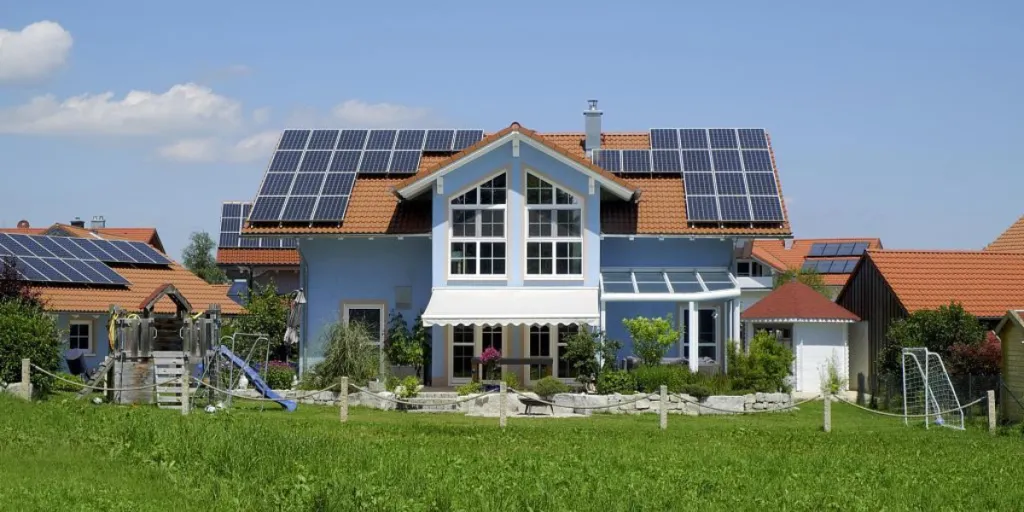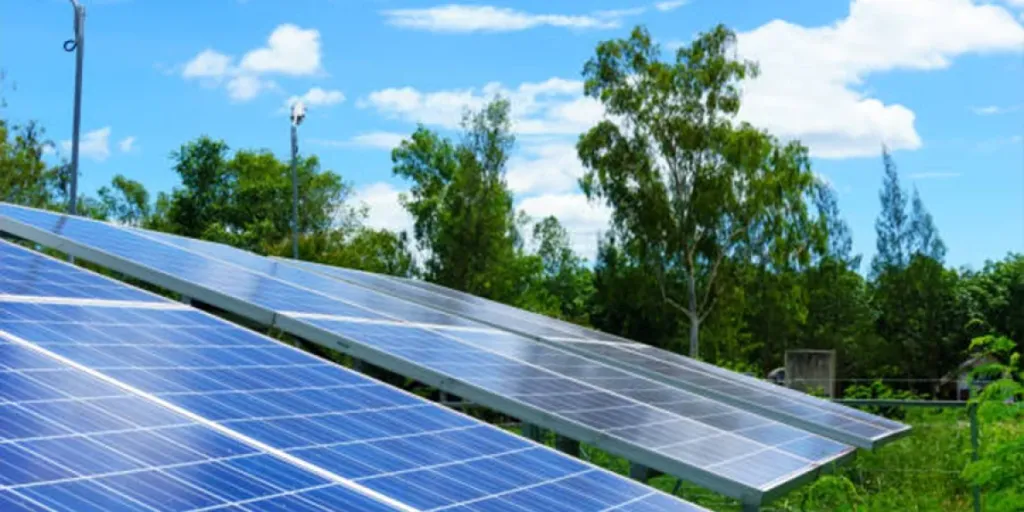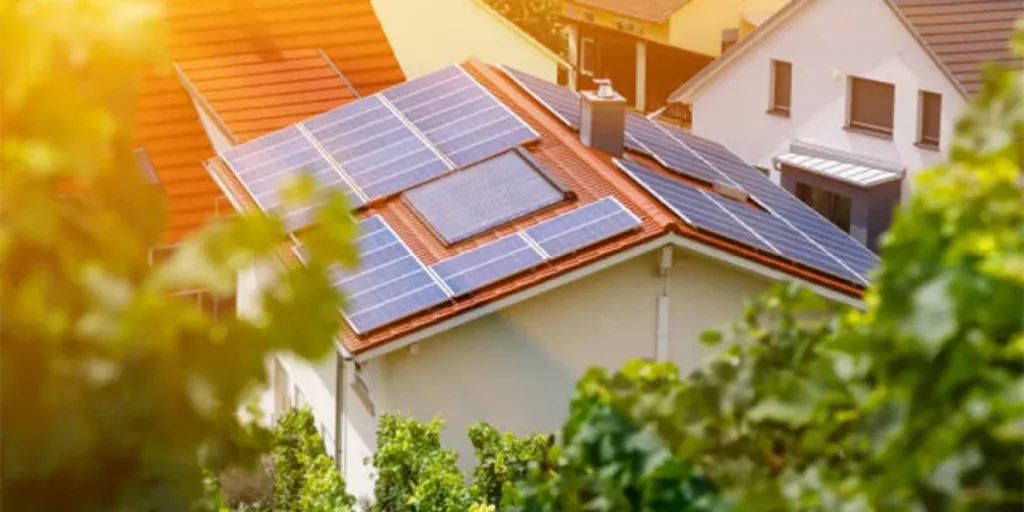Solar energy is an eco-friendly, sustainable power source. It reduces dependence on traditional energy sources as well as environmental pollution. Solar generators and solar thermal systems are today’s primary ways of utilizing solar energy in residential settings. This works by solar panels first harnessing photovoltaic technology to transform solar energy into electricity, which in turn is stored and then used to power utilities such as water heaters to generate thermal energy, which can be utilized for hot water supply, heating, and other applications.
Here we’ll focus on how such solar panels are beneficial for residential applications, the various usage scenarios, as well as what prices buyers can expect in today’s market.
Table of Contents
Residential solar energy usage scenarios
Benefits of using residential solar systems
Assess the feasibility of installing residential solar energy
Prices of solar panels
Tax incentives for residential solar power
Project case
Conclusions
1. Residential solar energy usage scenarios
Solar technology offers a vast array of applications and is suitable for both urban and rural settings, as well as for houses of varying sizes. Photovoltaic (PV) solar energy can be tailored and installed according to specific needs and circumstances. For instance, by arranging solar panels on the roof, walls, or the ground in your yard, you can generate electricity for your own household.
If your house has a limited roof area that isn’t suitable for rooftop photovoltaics but you have a spacious yard, you might consider courtyard PV. Such photovoltaic panels can be mounted high above the courtyard, akin to an awning, providing shade and protection from sun, rain, and wind. Alternatively, they can be added to the top of a parking shelter, storage room, or leisure pavilion, etc.
2. Benefits of using residential solar systems
Reduce energy costs
By utilizing solar energy, homeowners can reduce their electricity costs. Utilizing solar power provides an entirely cost-free energy source, eradicating the necessity to buy electricity from the grid. With a lifespan of 25 years or more, solar panels can generate substantial savings on energy expenses in the long run. Homes that consume a lot of electricity stand to benefit the most from installing solar panels.
Increase the value of your home
A recent study found that home buyers are prepared to pay a premium for properties with pre-installed solar systems. Moreover, houses fitted with solar panels often command a quicker sale than those without them. For example, in California, homes with energy-efficient features and PV sold faster than homes with higher energy consumption in 2008.
Reduce pollution
Solar energy is a pollution-free power source that doesn’t emit harmful gases such as carbon dioxide, therefore reducing pollution and helping to protect the ecosystem.
3. Assess the feasibility of installing residential solar energy
The installation of solar energy systems needs to be carried out by professional installers. Before installation, a site survey and assessment will be carried out to determine whether it is feasible to proceed with the installation. Typically, the installation of solar panels requires the following conditions:
High sunlight exposure
Solar panels for homes require ample sunlight to generate electricity efficiently. Typically, they need at least 4-5 hours of direct sunlight per day, unobstructed by trees or buildings.
Suitable roof
Solar panels need to be installed on a flat or nearly flat surface to ensure that they maximize sunlight absorption. Generally, south-facing roofs with a tilt angle between 15 to 40 degrees provide optimal performance.
The size of the roof area is another important factor. A typical 5kW solar power system would require approximately 20 solar panels, each measuring 1,650 by 99 centimeters and around 35 square meters of roof space. If the roof area is insufficient or obstructions exist, it may not be possible to install a solar power system with adequate capacity for home use. In addition, the roof must be strong enough to support the weight of the solar panels.

Appropriate climatic conditions
While solar panels can be used in a variety of climates, they are more efficient in some than others. As to expected, solar panels produce more energy in warm and sunny climates, while solar panels in cold conditions need to be properly protected against damage from snow, ice, or other inclement weather.
A simple solar power system can meet the needs for self-generation and self-consumption. However, if a homeowner also wants a backup storage device to avoid power outages and power limitations, they must check that their potential system has an integrated energy storage system. With such a system, excess electricity can also be sold back to electricity companies, making them a cost-efficient solution.
4. Prices of solar panels
The cost of residential solar systems fluctuates based on factors such as battery material, the number of panels, the specific usage scenario, and the brand.
There are several ways to utilize a residential solar system. You can either purchase and install the entire system or opt to harness solar energy through a rental agreement or a power purchase agreement (PPA).
Ultimately, acquiring a solar system tends to have the lowest overall cost. Solar purchases can be financed through loans, and some regions offer below-market-rate solar loans. Alternatively, you can lease a solar system from a solar company and enjoy solar power without any upfront costs, purchasing electricity based on your consumption. However, leasing solar comes with no tax incentives.
If you do not possess your own home or if your current residence is not suitable for a solar installation, you may want to consider participating in a community solar project.
Community solar projects enable multiple individuals to collaborate in harnessing solar energy, thereby reducing costs and promoting greater renewable energy adoption. Typically, these projects consist of a series of solar panels installed in a public area or on private property, providing electricity to community members. The cost of acquiring and installing a solar system is distributed among all participants, allowing them to purchase solar energy according to their budgetary needs. These projects are generally owned by third-party entities and shared by community members.
If you are interested in participating in a community solar project, you can contact a local community solar provider or organization. Typically, members enroll in a community solar project by paying a designated fee, with the cost of participating in a community solar program being lower than what it would cost to install solar panels for private use.
5. Tax incentives for residential solar power
The use of residential solar power may qualify you for tax incentives. For example, the U.S. government provides a federal investment tax credit (ITC) to encourage residents to adopt solar PV systems, helping taxpayers reduce the cost of purchasing and installing solar PV systems. For example, filing a USD 1,000 federal tax credit can reduce income tax by USD 1,000.
Solar PV systems installed in 2020 and 2021 are entitled to a 26% tax credit, according to the Homeowner’s Guide: Solar Photovoltaic Federal Tax Credit, provided by the U.S. Department of Energy’s Office of Solar Energy Technologies. Congress approved an extension of the ITC in August 2022, which raises the rate of the tax credit to 30% for systems installed in between 2022-2032. (Systems with installation dates on or before Dec. 31, 2019, are also eligible for the 30% tax credit.) The rate of tax credit will be cut to 26% for systems installed in 2033 and lowered to 22% for systems installed in 2034. The tax credits would begin to expire in 2035 unless extended by Congress.
In addition, state and local governments offer a range of incentives, such as subsidies and loans. However, specific policies vary by region and program. When considering residential solar installation, it is recommended that you review your local policies as well as ask your installer for detailed information on tax incentives and subsidies.
6. Project case
The Hongtuli neighborhood rooftop photovoltaic project in Wuhan, China, installed photovoltaic systems on the roofs of high-rise residential buildings to power the underground garages. The project was completed and put into use in December 2020.
The system utilized 784 thin-film solar modules, which were placed flat on the roofs of four high-rise residential buildings. The total input area was 640 square meters, generating an annual energy output of 63,870 kilowatt-hours. This corresponds to a daily production average of 175 degrees of electricity.
This renewable energy source powers more than 500 lamps over a two-story garage with an area of over 40,000 square meters.
7. Conclusion
Installing residential solar panels can increase the value of your home and allow you to enjoy tax incentives and policy subsidies. Both high-rise residential buildings and private homes can be equipped with solar panels to enjoy the economic benefits of solar power generation and contribute to environmental protection.
No matter what your energy needs, you’re likely to find exactly what you’re looking for via the huge range of PV equipment and manufacturers on Alibaba.com.




